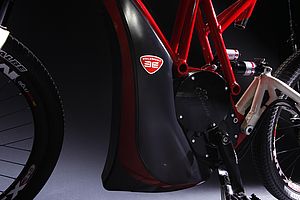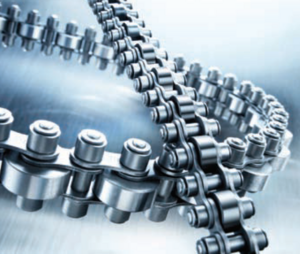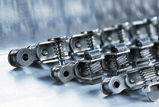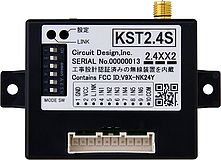Special accumulation chains have been developed for continuous conveyor systems manufactured by Altratec Montagesysteme. These systems feature two continuously running synchronised conveyor chains.
Accumulation chains allow workpiece carriers to be accumulated, separated, buffered and positioned at any point throughout the workflow, and therefore conveyed independently of the process cycle. The workpiece carriers or jigs can also be bolted to the conveyor chain for synchronised transport without accumulation.
Altratec Montagesysteme is based in the Swabian town of Schwieberdingen, with additional manufacturing in Neukirchen, Saxony. Altratec manufactures modular transfer systems for production and assembly lines based on a modular system of aluminium profiles. Accumulation conveyors represent a compact, modular transport system for conveying and buffering workpieces between manual and automated workstations with handling equipment, robotics, and machine tools. Also manufactured are special accumulation conveyors referred to as over-under conveyors with multiple tiers.
Accumulation conveyors feature two continuous, synchronously running conveyor chains. Workpiece carriers can be accumulated, separated, buffered and – if necessary – positioned at any point along the accumulator roller chain. In the carry and return sections, workpiece carriers form a level surface and at the end of the section are scanned for the presence of workpieces. Only then are empty carriers released for the return journey, and run upside down along the return section. The flexibly joined carrier segments open when deflected in order to pass around a radius and at this point engage positively with the chain. When they reach a workstation they are stopped, separated if necessary, and positioned. The continuous conveyor has a wide range of applications. Workpieces can, for example, be conveyed suspended underneath the chain as empty workpiece carriers return on the conveyor’s top section.
This demanding conveying task requires special accumulation chains. Altratec found a solution in close co-operation with long-term partners iwis. Together with Altratec, Munich-based chain specialist iwis developed a special-purpose accumulator chain with chain bolts that are extended on one side and fitted with additional running rollers. “These ‘bolt extensions’ allow the workpiece carriers to be returned along the chain’s return section, “removing the need for additional conveying sections for returning the carriers”, explains Peter Grabmann, technical manager at iwis antriebssysteme in Munich. “To achieve a usable system required close co-operation between the technical departments of the two companies.”
The over-under conveyors have particular advantages for the user as they save space by returning the workpiece on the same conveyor. This also reduced the size and complexity of the control system software and hardware: fewer sensors and pneumatic components, no additional motors for lateral movement, and no angular transfer units and lifting stations are needed thus reducing costs. By design, the length and width of the workpiece carriers are joined like a shutter system and can be varied as required for the transported workpieces with aluminium profile segments of 25 × 100 mm. The continuous conveyor is suitable for heavy workpieces, has a long service life, and is unaffected by contamination with oils and cooling lubricants.
In addition to over-under conveyors, Altratec uses iwis’ chains in conventional continuous workpiece carrier conveyor systems, in curved accumulator chain systems using side bow chains, in modular belt and flat top chain systems, and in side plate chain conveyors. “Our co-operation with iwis is not limited to purely commercial aspects, to buying chains off-the-shelf”, explains Rüdiger Jentsch, Sales Manager at Altratec. “For Altratec, iwis is a vital source of expertise in the search for the realisation of our chain concepts and in further developing both new and existing materials handling technology.”
Edited by Constanze Schmitz























